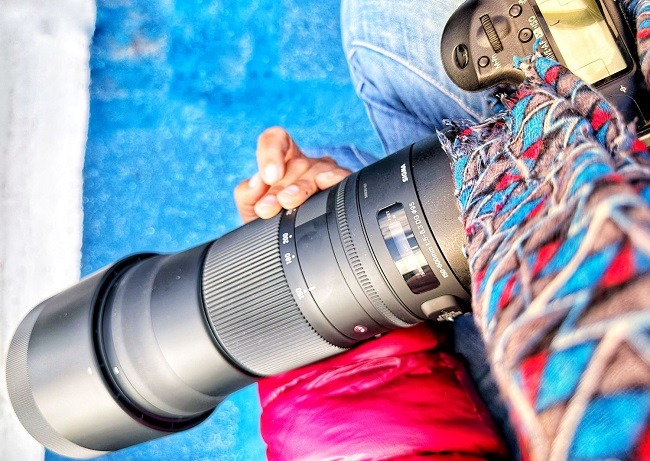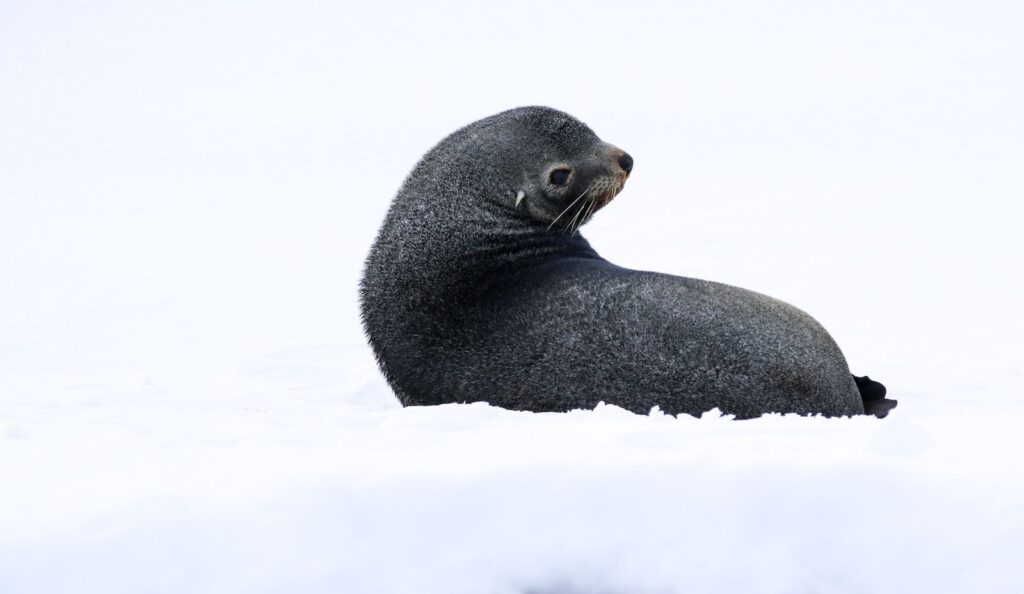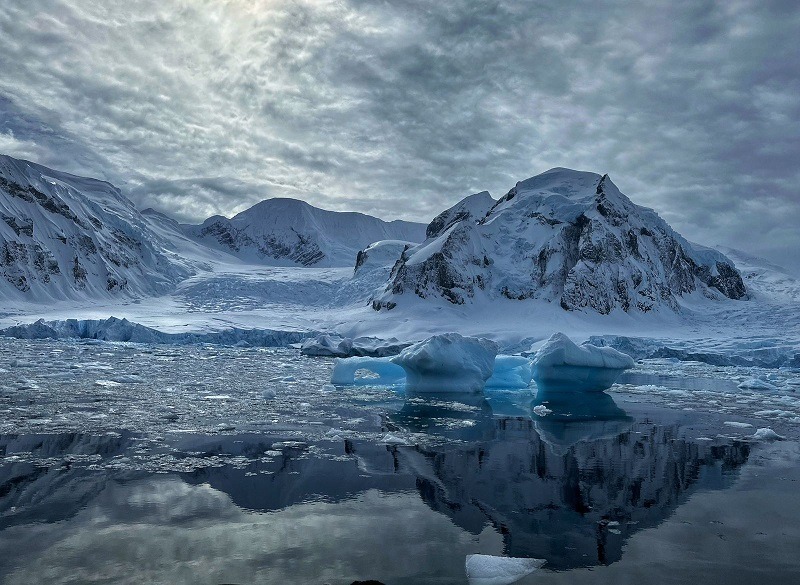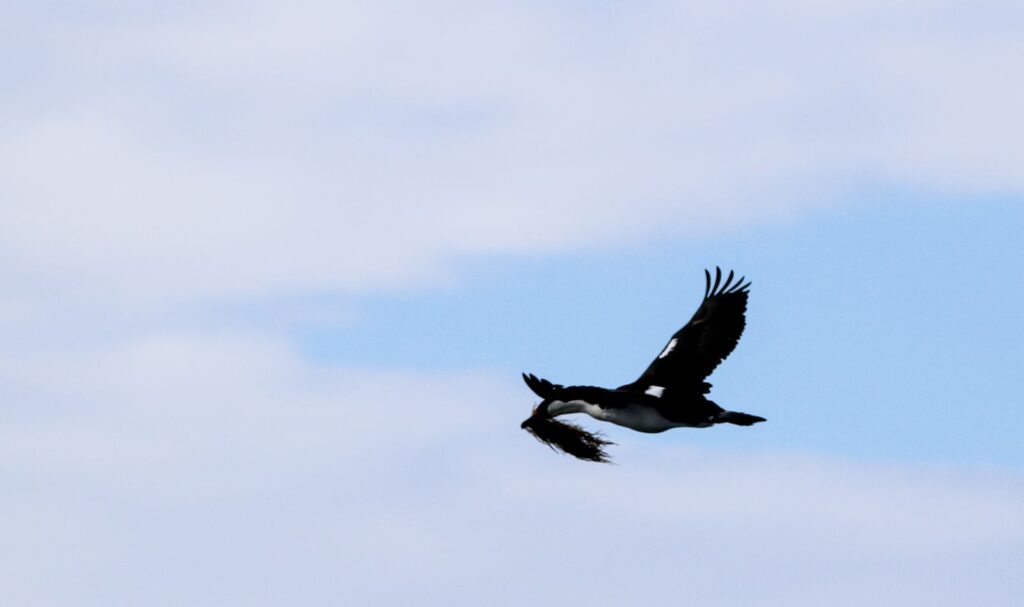Capturing the Frozen Beauty: Antarctica Photography (2025 and 2026)
With realm of ice and wonders, the continent of Antarctica is draped in pristine white landscapes and surrounded by icebergs which are photographer’s dream come true. In this post, we delve into the art and challenges of Antarctica Photography. Every frame captures the raw beauty of a place untouched by time promising an expedition into the heart of Earth’s last wilderness.
This article may contain affiliate links, meaning if you decide to purchase via my links, I may earn a commission at no additional cost to you. For complete information, please see our affiliate disclaimer here.
Antarctica Travel Resources
CruiseDirect and Cruise Critic to find the best deals on cruises
Skyscanner and Trip.com for finding cheap flights
SafetyWing or WorldNomads for travel insurance. Travel insurance is mandatory when going to Antarctica.
Travel Blogs
Reasons to Visit Antarctica
22 Best Things To Do In Antarctica
Antarctica Clothing and Packing List
Antarctica Photography
Traditional Cruise vs. Expedition Cruise: How to Choose Antarctica Cruise?
How Much Does it Cost To Go To Antarctica?
5 Reasons Why Drone is Not Allowed in Antarctica
100+ Cruise Tips for Beginners to Ensure a Smooth Voyage
Page Contents
The Antarctica Landscape: A Photographer’s Paradise
Boasting the most breathtaking and pristine scenery on the planet, Antarctica is a photographer’s paradise. It offers a surreal canvas of ice, snow, and wildlife. Renowned for its colossal icebergs and glaciers that sculpt the landscape in jaw-dropping formations, the white continent at the southernmost tip of the Earth is a land of extremes, providing dramatic landscapes to photograph.
The key to capturing stunning photographs in Antarctica is a combination of technical skill, creativity, and an appreciation for the unique beauty of this frozen continent.
Towering ice formations and patterns, such as the iconic tabular icebergs, create a dramatic backdrop against the stark polar sky. The interplay of light and shadow on the icy surfaces provides photographers with an ever-changing palette of colors, from elegant blues to pure whites, making each shot a unique masterpiece.

Antarctica’s sheer vastness and isolation contribute to its attraction for photographers seeking untouched landscapes. The absence of human infrastructure and life ensures that every frame is free from man-made elements, allowing the pure beauty of nature to take center stage. Photographers can capture the sense of remoteness and isolation, creating images that evoke a profound connection with the Earth’s last wilderness.
Important! Ensure to dress warmly and be prepared for the harsh conditions. You need to be Antarctica ready with the perfect clothing and packing. This will not only ensure your safety but also allow you to focus on your photography without distraction.
Essential Photography Gear for Antarctica
Capturing the breathtaking landscapes and unique wildlife of Antarctica requires careful consideration of essential photography gear. The extreme conditions demand equipment that is not only capable of delivering high-quality images but is also robust enough to withstand the harsh environment, including the snow storm.
Preparing for an Antarctic photography expedition involves not only choosing the right gear but also understanding how to use it effectively in extreme conditions. Ensure you familiarise yourself with your equipment and test it in various settings before embarking on this photographic adventure.
- Use a high-quality camera for superior pictures.
- Try to use various lenses that will be suitable for the photographs. Since it becomes difficult to handle multiple lenses on the land and zodiacs, use one good lens, preferably a telephoto lens, for capturing wildlife. And for landscapes, use your smartphone.
- Ensure your gear is weather-proof and water-resistant.
Camera Body
Opt for a durable and weather-sealed camera body to protect against the cold, rain, snow, and potential splashes. Full-frame DSLRs or mirrorless cameras with good low-light performance are ideal for capturing varied lighting conditions.
If you do not have a camera, then you can take your smartphone so you can capture the stunning landscapes of Antarctica.
I brought along my Canon 7D Mark II, which performed admirably in the harsh conditions of Antarctica. Despite a slight slowdown caused by the lens and memory card, I managed to capture some breathtaking images of the wildlife and birds.

Lenses
Pack one versatile lens to accommodate different shooting situations. A telephoto lens (70-200mm or longer) is crucial for wildlife photography, allowing you to zoom in on distant subjects.
When photographing landscapes, go for a wide-angle lens, typically around 16-35mm, or utilise the capabilities of your smartphone. In my case, I exclusively used a Sigma 150-600mm lens to capture wildlife, while relying on the iPhone 14 Pro Max for stunning landscape shots.
Polarising or UV Filters
Polarising filters can help reduce glare from ice and water surfaces, enhancing color and contrast. UV filters provide an extra layer of protection for your lenses in harsh conditions. I managed to take pictures on my expeditions without any of the filters.
Tripod
A sturdy, lightweight tripod is essential for stabilising your camera, especially during long-exposure shots. Look for one that is easy to set up and durable enough to withstand cold temperatures. I did not carry any tripod and managed with high shutter speed so the photographs were sharp.
Memory Cards
Antarctica’s stunning landscapes lead to taking lots of pictures and videos, so pack high-capacity and fast memory cards. Ensure taking multiple memory cards and a durable card case to protect against rain and snow.
I had packed a minimum of five memory cards. You will be delightfully surprised by the sheer number of photos you will capture on your expedition, so make sure to bring plenty of memory cards.
Extra Camera Batteries
Cold temperatures can drain batteries faster than usual. Bring several extra camera batteries and keep them close to your body to preserve their charge. If you do not have multiple batteries, that is fine. You can use the time between the expeditions to recharge your camera battery.
Lens Cleaning Kit
Antarctica’s environment can be harsh on lenses. Pack a cleaning kit with a blower, lens cleaning solution, microfiber cloths, and lens wipes to keep your equipment in optimal condition.
Understanding Antarctica Light
The region’s unique lighting conditions, with extended periods of sunlight, twilight and vibrant polar sunsets, add an enchanting dimension to photography in Antarctica. The soft, diffused light during these periods enhances the textures of the ice, creating a dreamlike atmosphere that photographers find irresistible.
- Take advantage of the lighting conditions, especially at golden hours (sunrise and sunset).
- Try to experiment with long exposures to capture movements. You will need a tripod to take shots with long exposures.

Wildlife Photography in Antarctica
Home to a variety of iconic species, including penguins, seals, and whales, the wildlife of Antarctica further enhances its appeal to photographers. Photographers have the opportunity to capture intimate moments of these creatures in their natural habitat, whether it is penguins waddling across the ice, seals basking on ice floes, or majestic whales breaching the frigid waters.
- Be patient and observe the animal’s behaviour before taking pictures.
- Use fast shutter speed to take sharp pictures and avoid motion blur.
- Go down as much as you can to the eye level with the animals for captivating shots. Unfortunately, we could not lie down or bend when we were on land due to the International Association of Antarctica Tour Operators (IAATO) regulations. So, we tried to hold the camera as low as possible.
Follow guidelines to minimise your impact on the environment and wildlife.

Capturing Ice and Snow: Techniques for Shooting White-on-White
Shooting in white and icy landscapes, where the predominant colors are shades of white, presents a unique set of challenges for photographers. Mastering techniques for capturing the subtle textures and nuances of ice and snow can elevate your images from boring to breathtaking.
- Showcase unique ice shapes and formations, textures, and patterns.
- Experiment with black and white photography as they really come out awesome.
- Consider the environmental conditions as part of the story. Shots of icebergs, snow storms, rain, and freezing waters (underwater shots) can add drama.
- Switch to manual or aperture modes for better control over exposure. Keep an eye on the histogram to prevent overexposure, ensuring details are retained in the highlights.
- Snow and ice can trick your camera’s metering system, resulting in underexposed images. Increase your exposure compensation by +1 to +2 stops to ensure that the whites appear bright and well-exposed.
- Capture images in RAW format to retain maximum information. RAW files provide more flexibility in post-processing, allowing you to fine-tune exposure and white balance. I captured my pictures with RAW + JPEG settings, and that way, I had the RAW pictures for later editing and JPEG for quick sharing on social media.
- Set a custom white balance or use the Daylight preset to maintain the natural color tones of the snow. Avoid the Auto white balance setting, which may introduce a bluish tint.
- Introduce elements of contrast or vibrant colors to break up the white landscape. Include subjects like rocks, reflections, wildlife, or vibrant clothing to create focal points and add visual interest.
- Lens hoods help prevent lens flares caused by the bright snow. They also offer additional protection for your lens in challenging weather conditions.
- Experiment with different metering modes, such as evaluative or matrix metering, to find the mode that works best for your specific snowy scene.
- Play with selective focus to draw attention to specific elements in the scene. Use a wide aperture to create a shallow depth of field and emphasize your main subject.
- Practice is key when mastering these techniques. Experiment with different settings and approaches to find the style that best suits your vision for capturing the beauty of ice and snow in your photographs.

Composing Stunning Antarctica Photographs
While photographing Antarctica and its dramatic landscapes and wildlife, it is important to focus on the composition. Here are some of the things that you can do in order to get spectacular pictures:
- Concentrate on the subject and use the rule of thirds to create a balanced image.
- Try to incorporate foreground elements and subjects to add depth to the pictures. For example, use icebergs or wildlife in the front to create perspectives.
- Move around and experiment with different angles.
- Incorporate human elements like the expedition members or researchers to add scale.
- Capture candid moments that showcase the joy and happiness of being in Antarctica.

Weathering the Elements: Protecting Your Gear
When you are in Antarctica, it becomes even more important to protect your gear. With harsh and challenging environments, safeguarding your gear and equipment becomes a topmost priority. There are many various ways you can protect your gear like the camera rain gear, waterproof bag and dry bag.
Each day, upon returning to my room from the zodiac excursion, I would carefully wrap my camera in a dry towel to ensure it stayed warm.
Camera Rain Cover
A rain cover designed for your specific camera model can be valuable in protecting against unexpected rain or snow storms. Invest in a good rain cover for your specific camera model and lens to shield it during unexpected downpours.
Waterproof Camera Bag
Choose a camera bag that is not only waterproof and weather-resistant but also provides adequate padding and compartments for your gear. A backpack-style bag is convenient for mobility during on-shore excursions.
Keep sealable plastic bags in your kit to provide quick makeshift protection in case of sudden weather changes. I used to utilise a plastic bag to encase my camera, placing it within my camera bag or dry bag for added protection.
Dry Bag
Protect your gear from potential splashes or moisture by using dry bags for storage. In my opinion, this proved to be a highly valuable and wise investment. Much like the indispensable dry bags we bring along for scuba diving, having dry bags during expeditions was equally crucial. They played a pivotal role in protecting the camera and lens to the best of their ability.
Post-Processing and Editing: Enhancing Your Antarctic Shots
Photography transcends the mere act of capturing images; it involves employing technical skills and creativity to weave a narrative and showcase it to an audience. While I may not advocate extensive post-processing and editing, I do recognise the significance of refining color grading and making minor adjustments. This ensures that the photographs authentically convey what the eyes witnessed.
- Enhance your pictures with post-processing techniques and methods to get the best in them.
- Pay attention to the colour correction, contract, clarity and sharpness.
- You can either use applications like Lightroom or Photoshop, or just use what your phone provides as an in-app editor.

Sharing Your Antarctica Photography
Sharing your Antarctica photography is not only a way to exhibit your skills but also an opportunity to educate and inspire others, raise awareness about the region, and contribute to the appreciation of its unique and fragile ecosystem. It allows you to showcase the unique beauty and experiences captured in this remote and pristine environment.
Add discrete watermarks or reduce the quality of the images before sharing your pictures online.
- Tell a story – Arrange your photographs in a way that it tells a story to the viewer. Talk about the journey, the landscapes and the wildlife you saw during your travel.
- Use social media and other platforms – Do not hesitate to share your pictures on social media and other platforms to covey the messages and talk about your expedition.
- Showcase at Exhibitions and Galleries – Consider printing your best images and showcase at local exhibitions and galleries.
- Create a coffee-table photo book – Compile and create a photo book allowing viewers to feel and experience the journey.
- Geotagging and Metadata – Geotag your images with locations where the pictures were taken. Include the metadata like the camera settings, conditions, lighting to provide insights.
- Raise awareness – Use your pictures to raise awareness about the importance of preserving the white continent and its ecosystems.

Antarctica Photography Tours and Workshops
One of the best things to do in Antarctica is to take and participate in Antarctica photography tours and workshops. They provide an amazing and rare opportunity to capture the pristine and untouched land.
- Experienced Photographers – Select the tours led by experienced guides and photographers. Find someone who is knowledgeable about the cameras, region, climate, and wildlife.
- Small-sized Photography focused groups – Look for small-sized group tours specifically designed for photographers. During my journey on the photography workshop tour, our group had the privilege of being the initial disembarkation from the ship for expeditions. This unique opportunity allowed us to capture the beauty of landscapes and wildlife without the presence of other groups.
- Photography Gear Assistance – Seek out tours that offer assistance in supplying and managing photography gear. During my expedition cruise, we were fortunate to have a Sony Ambassador onboard who provided us with three suitcases full of cameras and lenses for use throughout our journey and workshop.
- Photography Lectures – Choose workshops that include lectures on techniques and post-processing, particularly in the unique setting of Antarctica. Look for opportunities to receive constructive feedback and participate in critique sessions to enhance your skills.
Closing Notes
For photographers, Antarctica is not just a destination; it is an unparalleled visual symphony of nature’s display and grandeur. From the towering ice formations to the charismatic wildlife and the ethereal polar light, Antarctica’s landscape beckons photographers to embark on an unforgettable journey of visual exploration and storytelling. It is a place where the camera becomes a tool to capture the essence of a world that remains largely untouched by human influence.
How can you support me?
You know how much I love coffee, so you can buy me a coffee – Buy me Coffee!
Or you can purchase from one of the below travel resources without any extra charge to you:
Travel Resources
Book your flight on Skyscanner.com or Trip.com
Reserve your accommodation on Stay22
Reserve your stay at a hostel on HostelWorld
Use RentalCars or DiscoverCars for hiring self-driven cars
Book your tours and travels or purchase tickets on Viator or GetYourGuide
For a universal SIM card, use DrimSim
Buy comprehensive travel insurance on SafetyWing and WorldNomads
If you liked this article and if it was helpful in your planning or travelling, do share, tweet, or pin this post.
Follow me on Instagram | Facebook | YouTube | Twitter | LinkedIn
Do you have a question? Do you want any suggestions and tips for travel, hikes, and scuba dives? Use the Subscription box below to sign up and get updates by email.
PIN for later reference | Antarctica Photography



